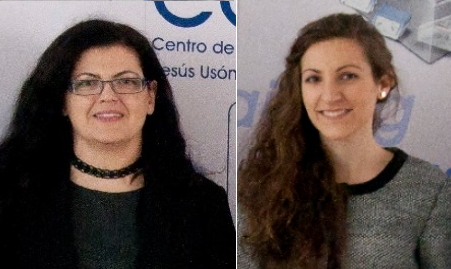The Public Sector Contracting Platform has published the awarding to the company “Depur GM Deseño e Obra S.L” to carry out the improvement works in the CCMIJU’s Animal Housing within the framework of the project “Updating the Infrastructures and implementation of a LIMS document control and management system to enhance the capacities of the Distributed ICTS NANBIOSIS Units managed by the CCMIJU (AILIMS-NANBIOSIS).
For further details, please click here
The mentioned project has been co-funded by the European Regional Development Fund (FEDER) through the Ministry of Science and Innovation within the framework of the Programa Operativo Plurirregional de España (POPE) for Singular Scientific and Technical Infrastructures (ICTS) 2014-2020 and by the Consejería de Economía, Ciencia y Agenda Digital of Junta de Extremadura.
The following actions are considered in the framework of the project:
-Within Unit 22 or Animal Facility, the Installation and development of an environmental treatment-control system of the housing rooms, an Improvement and adaptation of the spaces for experimental models, the Acquisition, installation and development of a two-door ultra- filtered air shower and the Acquisition, installation and development of a post-procedural recovery chamber.
– For the rest of the NANBIOSIS Units managed by the CCMIJU: Acquisition, installation and development of a LIMS Software.
The actions and their budget are detailed below, together with the FEDER co-funded rate and the national contribution.

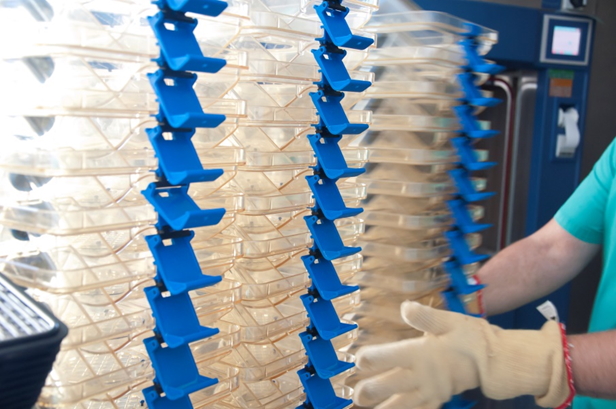
The Scientific Commission of ‘La Marató TV3’ has seleced the project entitled “Diagnosis and treatment of Sars-Cov-2 by triplex formation”, led by Ramon Eritja, Scientific Director of NANBIOSIS Unit 29 Oligonucleotide Synthesis Platform (OSP) from CIBER-BBN and IQAC_CSIC to be financed with € 398,750.00. Verónica Noé from the Fundació Bosch i Gimpera Universitat de Barcelona, the CIBERESP researcher Enrique Calderón Sandubete, from the Virgen del Rocío University Hospital and María Valeria Grazú Bonavía, from the Institute of Nanoscience and Materials of Aragón, INMA (CSIC- UNIZE) also participate in this project.
The edition of this solidarity initiative promoted by the Corporació Catalana de Mitjans Audiovisuals, raised more than twelve million euros to finance research against COVID-19. The project was selected, among the 229 submitted, to receive funding for its development.
“Our project wants to solve two important problems in the fight against the COVID-19 pandemic: the first is how to quickly and specifically detect people infected by this virus; and the second is that right now we do not have a effective therapy specifically designed to be used against the virus that causes COVID-19 “explains Dr. Eritja.
The project will try to solve both problems using synthetic oligonucleotides with high and specific affinity for viral RNA. “In recent years, a dozen oligonucleotides have been approved by Health agencies (EMA and FDA) for the treatment of genetic diseases such as Duchene muscular dystrophy as well as metabolic diseases such as familial hypercholesterolemia. In the project we will use specific oligonucleotides, procuced at NANBIOSIS U29, to bind viral RNA that could be used in vitro for the selective capture and diagnosis of the SARS-.COV-2 virus, but also in vivo to inhibit the replication of viral RNA “adds Ramón Eritja.
The call for grants from ‘La Marató’ was carried out, exceptionally, between the months of December and January. Until May, the 229 candidate projects have been reviewed electronically, following a process of proven rigor and transparency, coordinated by the Catalan Agency for Quality and Health Evaluation, in which 95 international evaluators have participated. The assessment, among other aspects, of the quality, the methodology, the scientific, health and social relevance, the innovative value and the viability of the candidate works has determined which projects have been financed with the resources of La Marató 2020.
With this new edition from La Marató, the solidarity project of the Catalan Audiovisual Media Corporation and the Foundation since 1992 an amount of € 216 million have been awarded and a total of 949 research projects hve been promoted, with participation of 9,350 researchers have participated.
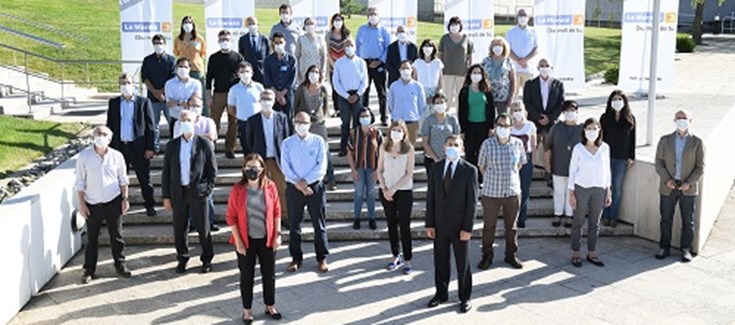
The management of musculoskeletal pain is a key challenge due to the short duration of anesthetic effect produced by existing clinical treatments, in addition to their potential side effects. Researchers from the CIBER-BBN, the Institute of Nanoscience and Materials of Aragón (INMA), CSIC-University of Zaragoza and the Institute of Health Research of Aragón (IIS Aragón), in collaboration with researchers from the Faculty of Veterinary Medicine of the University of Zaragoza and with participation of NANBIOSIS Unit 9 Synthesis of Nanoparticles Unit, have developed nanogels loaded with nanocrystals of bupivacaine (an anesthetic commonly used in epidural anesthesia and in the control of postoperative pain) obtaining a high drug content for a prolonged duration of local anesthesia.
These nanogels are an alternative to the most prescribed analgesics (antipyretics, steroids and opioids), which frequently present adverse effects such as nausea, vomiting, dizziness and physical dependence, among others. They consist of a biocompatible polymer derived from polyethylene glycol (PEG) that has heat-sensitive properties, so that they would be injected at room temperature and upon reaching body temperature after administration they undergo a change in their structure, resulting in a reduction in their volume. and transforming into a hydrophobic structure, thus controlling the release of the drug encapsulated within.
According to Manuel Arruebo, INMA-CIBER-BBN researcher, “we have validated this new way of dispensing the local anesthetic both in cell cultures and in animal experiments, showing that it increases the duration of sciatic nerve block twice compared to the same dose of free anesthetic. The synthesis of the drug nanocrystals has been carried out in NANBIOSIS U9 (from CIBER-BBN and University of Zaragoza) thanks to the wet chemical synthesis systems of the platform“.
The prolonged duration of anesthetic action can be explained by the regional immobilization of the nanogels at the injection site around the sciatic nerve due to their hydrophobic nature, preventing the diffusion of drug particles and their rapid elimination while interacting efficiently with the tissues thanks to to its temperature-induced conformational change. Studies have shown that this delivery system has low toxicity and does not give rise to an inflammatory response due to the slow release of the drug and the high biocompatibility of the polymer used.
The encapsulation of drug nanocrystals is a promising strategy, which allows reducing the total amount of drug necessary to produce pain relief with the consequent benefits obtained from the reduction of toxicity.
For their part, the researchers Teresa Alejo (INMA) and Víctor Sebastián (CIBER-BBN-INMA) affirm that “through these systems we seek to obtain an effective vehicle capable of prolonging the anesthetic effect in its place of action, avoiding as far as possible the side effects. In this way, they could be used to avoid systemic administration, reduce high concentrations in the blood and reduce the unwanted side effects of some conventional treatments, since they allow to control the release of the drug within the desired therapeutic range, avoiding the consequences of an excess of drug and the negative effects that this implies ”.
Likewise, with this technique the satisfaction and comfort of the patient is considered, since with a single dosage a prolonged therapeutic effect would be achieved. In Europe, with more than 500 million days of sick leave per year, musculoskeletal pain causes almost 50% of all absences from work lasting at least three days and 60% of permanent absences from work. Consequently, pain has a huge impact on work productivity. Some data indicate that the annual cost of pain is greater than the cost of heart disease, cancer and diabetes.
Therefore, the development of an effective injectable local anesthetic with a prolonged duration of action can improve the quality of life of patients affected by these diseases.
Article of refernce:
Teresa Alejo, Laura Usón, Guillermo Landa, Martin Prieto, Cristina Yus Argón, Sara García-Salinas, Ricardo de Miguel, Ana Rodríguez-Largo, Silvia Irusta, Victor Sebastián, Gracia Mendoza and Manuel Arruebo. Nanogels with High Loading of Anesthetic Nanocrystals for Extended Duration of Sciatic Nerve Block, ACS Appl. Mater. Interfaces, 13, 15, 17220–17235. 2021 April 6. [DOI]
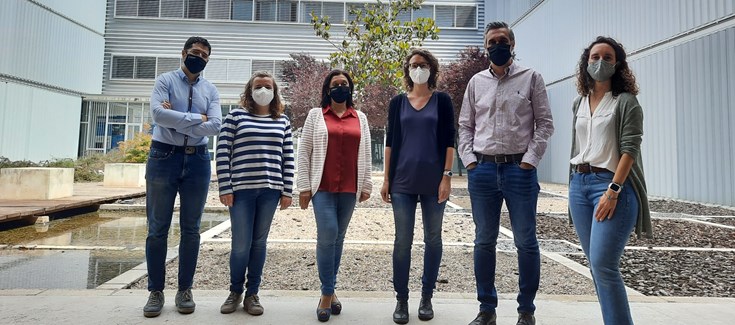
UAB
Parkinson’s disease (PD) is a common neurodegenerative disorder caused by the death of dopaminergic neurons in a part of the brain (known as substantia nigra pars compacta), which leads to a deficit of dopamine (DA), one of the main neurotransmitters active in the central nervous system. Symptomatic treatment focuses on increasing the concentration of dopamine into the brain.
However, dopamine is not directly administered, because it is unable to cross the so called blood-brain barrier, which prevents some of the substances circulating in the blood to penetrate into the nervous system. Thus, DA precursor levodopa (L-DOPA) –an amino-acid which participates in the synthesis of dopamine– is used, due to its better ability to cross such barrier. Nevertheless, long-term and intermittent administration of this drug is associated with important disabling complications, such as motor disorders and involuntary muscle movements.
In a paper recently published in ACS Nano, synthetic melanin-like nanoparticles are used to overcome these limitations. This research was coordinated by Dr Daniel Ruiz-Molina, leader of the ICN2 Nanostructured Functional Materials Group, and Dr Julia Lorenzo, leader of the Protein Engineering Group at the Institute of Biotehcnology and Biomedicine (IBB) of the Universitat Autònoma de Barcelona (UAB), and was developed in collaboration with the Neurodegenerative Diseases group of Vall d’Hebron Research Institute (VHIR), led by Prof. Miquel Vila.
The main objective of this work was to obtain a “nanoplatform” –which is a biocompatible nano-structure including the substance to be delivered– able to reach the brain through a noninvasive route and generate a slow and controlled release of dopamine. A tailor-made nanoscale coordination polymer (NCP), characterized by the reversible incorporation of DA as its principal component, was tested in vitro and in vivo in rats. Intranasal administration of these nanoparticles, called DA-NCPs, showed a relevant biocompatibility, non-toxicity and a fast and efficient distribution of dopamine in the central nervous system of the animals (avoiding the blood-brain barrier).
Ex vivo and in vivo preclinical MRI acquisitions were performed at U25 of NANBIOSIS ICTS NMR: Biomedical Applications I
As reported by the researchers, the proposed method is effective in delivering dopamine to the brain and, thus, in reversing Parkinson’s symptoms. In addition, the synthetic methodology used is simple, cheap and exhibited a satisfactory yield (with a DA loading efficiency up to 60%).
These findings establish nanoscale coordination polymers as promising future candidates for efficient nasal delivery of drugs to the central nervous system, and thus for the symptomatic treatment of people affected by Parkinson’s and other neurodegenerative disorders. This type of nano-formulation and administration route may also pave the way to the development of other platforms able to deliver a wide range of drugs into the brain in a controlled manner, for the treatment of various brain diseases (such as brain tumours, Alzheimer’s, Epilepsy).
Reference article:
Javier García-Pardo, Fernando Novio, Fabiana Nador, Ivana Cavaliere, Salvio Suárez-García, Silvia Lope-Piedrafita, Ana Paula Candiota, Jordi Romero-Gimenez, Beatriz Rodríguez-Galván, Jordi Bové, Miquel Vila, Julia Lorenzo, and Daniel Ruiz-Molina, Bioinspired Theranostic Coordination Polymer Nanoparticles for Intranasal Dopamine Replacement in Parkinson’s Disease. ACS Nano 2021, 15, 5, 8592–8609, May 2021. [DOI]
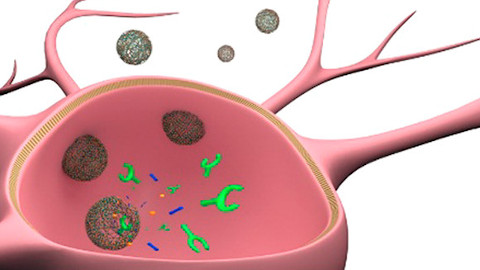
The Ministry of Science and Innovation has approved a call for ICTS for 37 million euros.
Investment lines of the ICTS associated with the construction, development, instrumentation, equipment and improvement of scientific-technical capacities of the ICTS will be financed with the 100% of the eligible cost.
This call is funded by the European Union Recovery and Resilience Mechanism.
The Singular Scientific and Technical Infrastructures (ICTS) are large, one-of-a-kind facilities, which are dedicated to cutting-edge technological research and development of the highest quality, as well as promoting the transmission, exchange and preservation of knowledge, technology transfer and innovation. They are distributed throughout the territory and included in the ICTS Map.
The aim of this call is the execution of investments included in the Strategic Plans of ICTS that have been declared of high priority by the Advisory Committee of Singular Infrastructures (CAIS) within the framework of the update of the ICTS Map 2017-2020. The total eligible cost of each application must be between 100,000 euros and 10 million euros.
In 2022 another call will be published for 37 million euros to finance actions of the new strategic plans of the ICTS 2021-2024.
The deadline for submitting applications will be from June 2 to June 22, 2021 at 2:00 p.m.
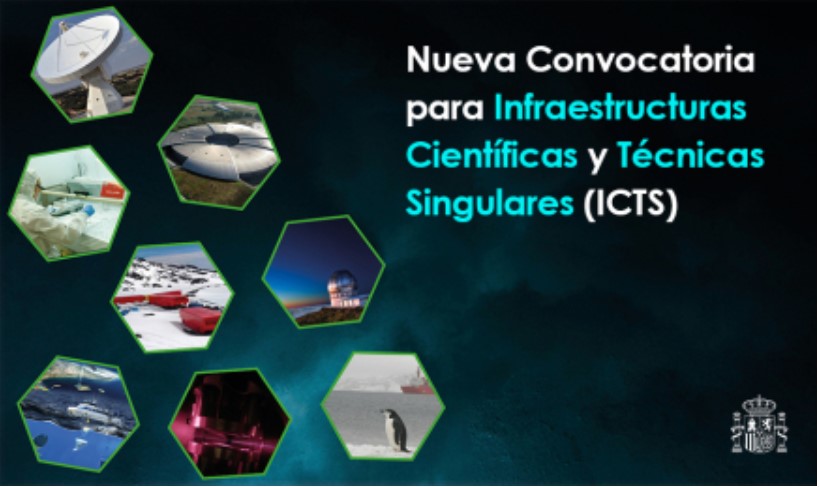
About 1% of the world’s population suffers from celiac disease, a complex and autoimmune disorder caused by ingestion of gluten and for which there is no treatment beyond its elimination from the diet. In Spain every May 27, the National Celiac Day is commemorated to publicize the disease and give visibility and support to people with celiac disease.
The detection of gluten becomes a key element for celiac patients to control the disease, as well as for the food industry, whose regulation requires declaring its presence in food. In this line, a team of researchers coordinated by the professor of the Polytechnic University of Valencia (UPV) and scientific director of the CIBER of Bioengineering, Biomaterials and Nanomedicine (CIBER-BBN), Ramón Martínez Máñez, are working on the development of intelligent methods for the gluten detection, to avoid the involuntary ingestion of this protein and also collaborate with the regulation and the fight against fraud in the food industry.
Recently published work in Analytica Chimica Acta presents a new system that enables rapid detection of gluten through a simple signaling process. As the authors state, it could be the basis for the development of portable, fast, sensitive and easy-to-use systems for the control of gluten in foods.
“The biosensor is composed of a nanoporous anodic alumina film loaded with a fluorescent dye and covered with an aptamer (DNA or RNA molecule) that specifically recognizes gliadin, which is the soluble protein of gluten” explains M. Carmen Martínez Bisbal, professor from the University of Valencia (UV) and researcher at the CIBER-BBN and the Interuniversity Institute for Research on Molecular Recognition and Technological Development (IDM UPV-UV) and one of the authors of the work. “In the presence of gliadin, the aptamer moves from the surface of the biosensor, resulting in the opening of the pores and the release of the signaling dye” adds Sara Santiago Felipe, researcher at the La Fe Health Research Institute, CIBER-BBN and the IDM UPV-UV and also author of the work.
The new sensor has been validated in real food samples, allowing the detection of gluten through a simple signaling process, with great potential for use in food control. “We have found that it has a detection limit of 100 µg kg-1 of gliadin, good selectivity and a detection time of 60 minutes,” explains Luis Pla, first signatory of the work and researcher at CIBER-BBN and IDM UPV-UV.
“Our results can be the basis for developing portable, simple, fast and sensitive systems for the detection of gluten, which can be easily adjusted through the use of different molecules, offering great potential for allergen testing” concludes the scientific director of the CIBER-BBN and NANBIOSIS Unit 26 Ramón Martínez Máñez.
Article of reference:
Luis Pla, M. Carmen Martínez-Bisbal, Elena Aznar, Félix Sancenón, Ramón Martínez-Máñez, Sara Santiago-Felipe, A fluorogenic capped mesoporous aptasensor for gluten detection, Analytica Chimica Acta, Volume 1147, 2021, Pages 178-186, ISSN 0003-2670, https://doi.org/10.1016/j.aca.2020.12.060
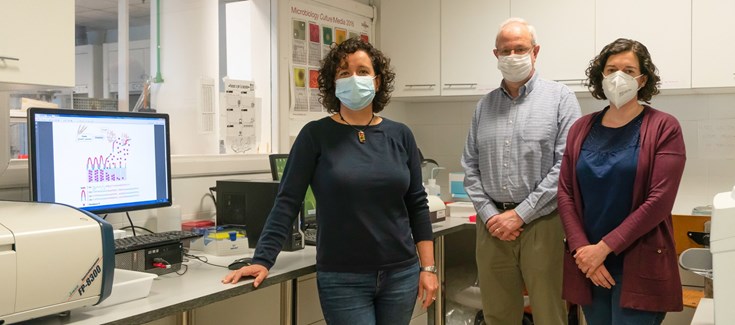
A team of Spanish researchers coordinated by the professor of the Polytechnic University of Valencia (UPV) and scientific director of the CIBER-BBN and NANBIOSIS unit 26, Ramón Martínez Máñez, and the Valencian oncologist, co-coordinator of the Research Group of Biology in Breast Cancer of the INCLIVA Health Research Institute, of the Hospital Clínico de València, Ana Lluch, also belonging to the CIBER de Cáncer (CIBERONC), has developed a prototype of a new biosensor to help detect breast cancer in its phases earlier. The work has been published in ACS Sensors magazine.
According to the latest data collected by the European Cancer Information System (ECIS), in 2020 a total of 34,088 new cases of breast cancer were diagnosed in Spain, this type of tumor being the most frequent among the women in our country.
Currently, mammography is the most widely used standard technique for diagnosis, but it has some limitations, such as radiation exposure, and lower sensitivity and specificity in young women with dense breast tissue. “For this reason, new diagnostic tools are necessary to help in the early detection of breast cancer. Our biosensor follows this line”, explains Ana Lluch.
The development of this prototype biosensor to aid diagnosis is part of the field of what is known as a liquid biopsy, which, through a blood test, helps detect the presence of cancer. In this case, the mesoporous biosensor developed by the UPV and INCLIVA team is simple to use, inexpensive and offers results in a very short time – between 30 and 60 minutes – from a patient plasma sample.
The biosensor is composed of a nanomaterial -a nanoporous alumina- that facilitates the detection in plasma of microRNA miR-99a-5p associated with breast cancer. Until now, this has been done with complex and time-consuming techniques, which means that they cannot be used as a diagnostic tool in the clinical setting.
Ramón Martínez Máñez explains how the alternative diagnostic system in which they work works: the nanopores of the biosensor are loaded with a dye -rhodamine B- and closed with an oligonucleotide. By interacting with the plasma sample, if it does not detect the presence of the microRNA, the pore doors remain closed; instead, in the presence of miR-99a-5p, those gates are opened and the dye is released. “The change in the release of the dye can be correlated with healthy patients or with breast cancer“, summarizes Martínez Máñez.
Researchers from the La Fe Health Research Institute (IIS La Fe) have also participated in the development of this biosensor, where tests have been carried out for the validation of the new biosensors, and the Cancer Network Biomedical Research Center (CIBERONC) .
“The next step in our work will consist of validation in a larger group of patients and continue working to make the detection system even more robust and easy to use,” conclude Juan Miguel Cejalvo, from the Cancer Biology Research Group of Mama from INCLIVA and Ramón Martínez Máñez.
Reference article:
Iris Garrido-Cano, Luis Pla, Sara Santiago-Felipe, Soraya Simón, Belen Ortega, Begoña Bermejo, Ana Lluch, Juan Miguel Cejalvo , Pilar Eroles, and Ramón Martínez-Máñez. Nanoporous Anodic Alumina-Based Sensor for miR-99a-5p Detection as an Effective Early Breast Cancer Diagnostic Tool ACS Sensors 2021 6 (3), 1022-1029 [DOI]
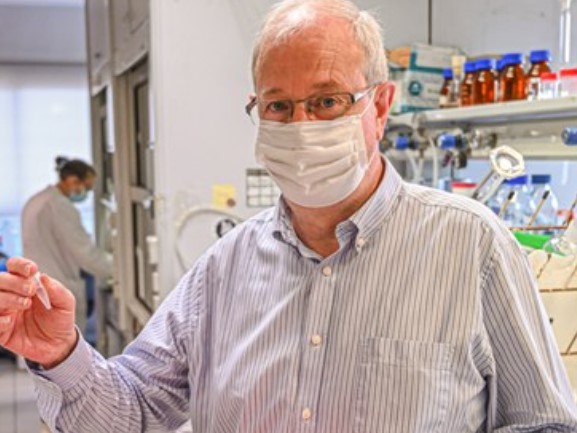
Cancer is one of the world’s leading causes of death, with over 18.1 million cases and 9.6 million deaths in 2018. One of the most successful drugs used in chemotherapy for the treatment of diverse severe cancers is 5-Fluorouracil (5-FU), however, one of the major problems described in clinical practice is 5-FU cell resistance.
Resarchers of the Nucleic Acids group and the Colloidal and interfacial Chemistry Group of CIBER-BBN at IQAC-CSIC have collaborated in a research to inspect and test the ability of parallel G-quadruplexes to deliver floxuridine oligonucleotides into different types of cancer cells; finally, the internalization ability and the antiproliferative action of these oligoFdU-G-quadruplexes have been evaluated in FU-resistant cell lines.
Recently an article has been published with the research results by the Jorunal of Molecules entitled “Parallel G-quadruplex structures increase cellular uptake and cytotoxicity of 5-Fluoro-2′-deoxyuridine Oligomers in 5-Fluorouracil resistant cells”
The article describes a potential solution to decrease the toxicity of floxuridine, a known nucleoside antimetabolite used in the treatment of colorectal cancer, explains Ramón Eritja, Scientific Director of NANBIOSIS U29 from CIBER-BBN and IQAC-CSIC.
The authors used the NANBIOSIS Unit 29 Oligonucleotide Synthesis Platform (OSP) to prepare short oligonucleotides that form a tetrameric structure that is recognized by cancer cells facilitating the specific delivery to the tumor cells. Once inside of the cells, the oligonucleotides generate the active drug by nuclease degradation as a Trojan horse.
Article of reference:
Clua A, Fàbrega C, García-Chica J, Grijalvo S, Eritja R. Parallel G-quadruplex Structures Increase Cellular Uptake and Cytotoxicity of 5-Fluoro-2′-deoxyuridine Oligomers in 5-Fluorouracil Resistant Cells. Molecules. 2021; 26(6):1741. [DOI]
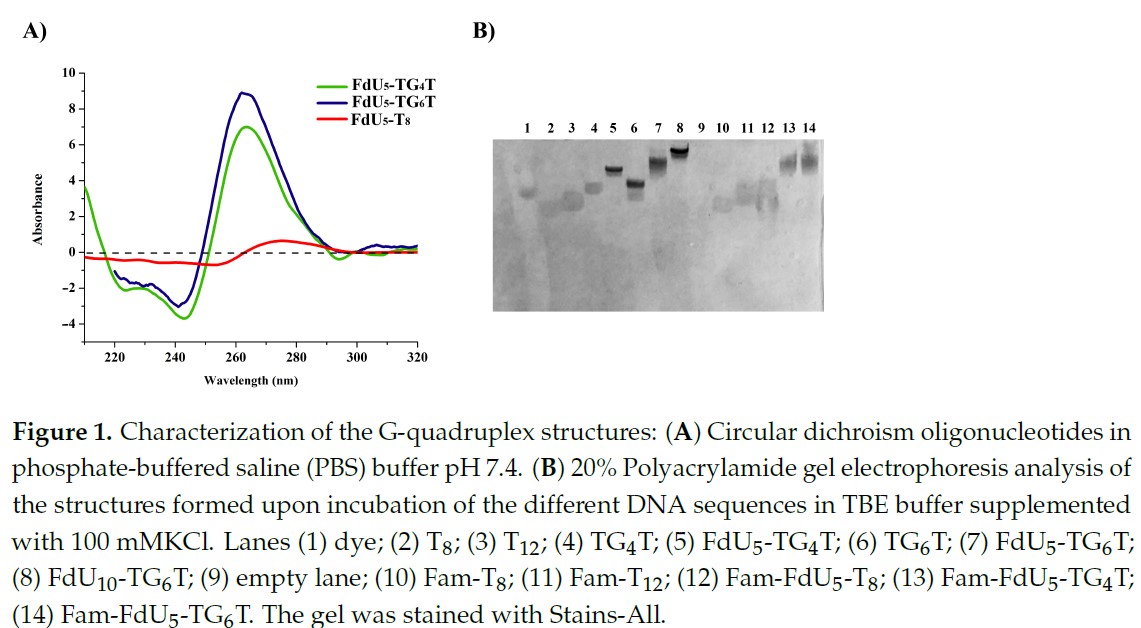
Verónica Crisóstomo, Scientific Director of NANBIOSIS unit 24 Medical imaging and Coordinator of the Cardiovascular area at CCMIJU afiliated to the Centro de Investigación Biomédica en Red Cardiovascular (CIBER-CV), along with Claudia Báez, researcher of that area, have been invited to co-edit the collection of video articles for JOVE.
“Have you ever tried to reproduce a methodology you have only read about on a paper? When we try it, we normally end up wishing we could see how the authors actually do it” – explain the researchers.
To date, very few Journals are available to accept video articles for submission/publication in our field, despite this type of articles being of paramount importance in translational cardiovascular research in order to share new techniques and approaches.
For this reason, reeaearchers decided to start a Collection entitled Large Animal Models of Cardiovascular Disease, from Training to Translation on JoVE, whose purpose is to offer a comprehensive overview and a visual guide to how successfully reproduce cardiovascular disease models in large animals with the ultimate aim of bridging the gap from bench to bedside.
The Journal is currently indexed in the major databases, including PubMed, EMBASE, Scopus and Web of Science. The most recent Impact Factor for JoVE (ISSN 1940-087X) is 1.163 in JCR.
JoVE’s team takes care of the entire process of filming and producing the video: after submission, each manuscript will be editorially and peer reviewed, which is typically a 1-2 month process. Once a text article passes review, a script will be generated. Generally, a filming date will be scheduled within 4-8 weeks after acceptance. A videographer will be sent to the authors’ site to film the procedure.
If interested, please contact by email crisosto@ccmijesususon.com or cbaez@ccmijesususon.com or submit the abstract here: https://www.jove.com/methods-collections/1004
